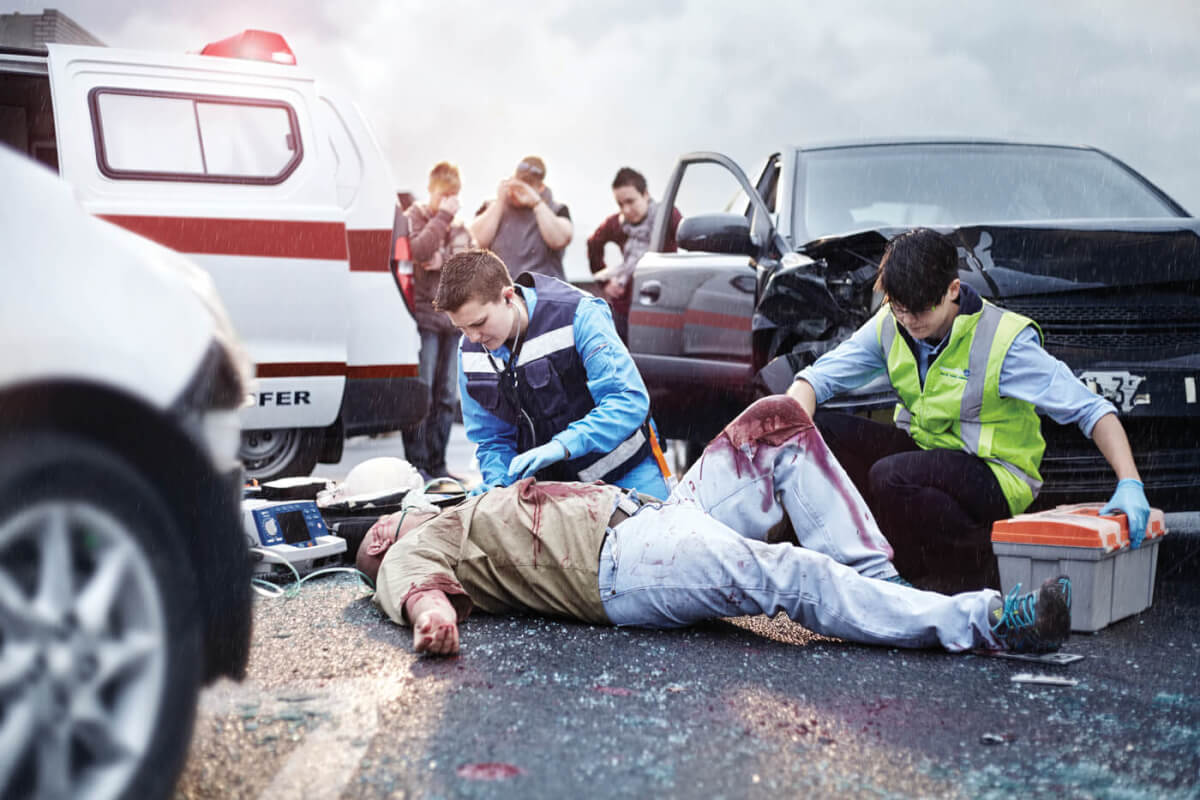I am always surprised to read some of what is in print or online about what you need for a first aid kit it the field.
I have seen some field guides that rival my textbooks from medical school. This is not to say that these do not contain good information; however, when you are having a problem in a difficult environment, you are unlikely to take the time to read a page of something much less a chapter.
So that leaves common sense, which some people say you can’t teach. I disagree. You can gain a skill set of safe practices that should serve you well and keep you safe. This short guide is meant as a common sense way to arrive alive at a higher level of care not to be a compendium of survival medicine.

MAJOR TO MINOR
In general, field emergencies fall under one of two categories. These are easily understood by asking these questions: 1. Am I injured? 2. Do I have an illness? Management of all problems should proceed from the most life threatening to least. If you know the ABC’s (airway, breathing, and circulation) and address medical issues in that order of importance, you stand a better chance of survival.
In simple terms, address a minor injury only after you treat a life-threatening injury. Understand that in a survival situation, things that normally may cause little disturbance may hamper your ability to perform tasks necessary to your survival.
Injuries may be blunt, penetrating, and environmental (heat or cold). One is not worse than the other; the different mechanisms may require varying management techniques but there is some crossover. Blunt injuries can occur from falls or falling objects. Penetrating injuries, whether from a missile or cutting or stabbing instrument, always creates the concern for bleeding, however, a blunt injury may cause internal hemorrhage that goes unappreciated until the individual is incapacitated.

Illness can range from minor sniffles to nausea, vomiting, diarrhea, fever, cough, and pneumonia that could be life-threatening in a survival situation. Illness limits your ability to do work and avoiding illness through proper handling of wild game, camp hygiene and water treatment will prevent illness from descending upon you.
The key to dealing with illness in a survival situation is to maintain your hydration and manage as best as you can until the (healing) process resolves or the survival situation has ended. Even if rehydration is painful to a throat sore from coughing, it is a necessary discomfort if you’ve been dehydrating yourself through vomiting and making diarrhea.
FIRST AID KIT
I get a lot of people in the survival/ outdoors community who ask me what to put into a first aid kit. This is one of my favorite questions because the answer varies depending on what the activity or the goals are. Overall a first aid kit should mirror what is in your go bag or pack. All of the equipment should be familiar to you and its use should be as close to muscle memory as possible. This means practicing with your kit and if your practice is meant to address severe bleeding, you want to make sure you practice correctly as this could save a life, maybe your own. Practice doesn’t make perfect, perfect practice makes perfect and in this case, perfect practice means saving a life. Here is a list of the basics:
1. TOURNIQUET This is one of the best life-saving pieces of kit you can have. Spend the money on a good one that you can put on with one hand. The Combat Application Tourniquet (C.A.T.) is relatively inexpensive and carried by both police and military.
2. HEMOSTATIC GAUZE This can be packed into a wound to stop hemorrhage. In an emergency, any dressing will do. Even if the dressing is not sterile, an infection is less important than bleeding out. The infection can be treated after the fact.
3. TAMPONS These make great wound dressings.
4. 4-INCH AND 6-INCH ELASTIC WRAPS These are great pressure dressing and support for strains and sprains. This can also be used to splint fractures.
5. PAIN RELIEVER/FEVER REDUCER These items, such as acetaminophen and ibuprofen are essential. Make sure to check the expiration dates and remaining quantities left in the container.
6. DIPHENHYDRAMINE This is good for allergic reactions and can also help with nausea and will induce sleep.
7. PLAIN GAUZE For general cuts, scrapes and bleeding.
8. SCALPEL OR RAZOR BLADE IN A STERILE WRAPPER Instead of using a safety pin to pop blisters or remove splinters a dedicated cutting tool works more efficiently.
9. PEPTO-BISMOL Great for diarrhea and stomach upset (you don’t need the liquid and other similar products are fine).
10. TRIPLE-ANTIBIOTIC OINTMENT This can be used for scrapes and burns.
11. TRAUMA OR EMS SCISSORS These can be used for cutting away clothing to access injury easier.

KEEP IT SIMPLE
Keep your medical gear straight forward, easy to use, and practical. Keep it organized, within reach and with as few deliberate motions needed to access it. When in a group or a team try to standardize your kit as the kit you carry can be used by another for you and it may be in a time or scenario where searching through it risks your health or safety.
Adopting individual first-aid kits (IFAKS) with-in a group is a good practice. Practice with your kit so that you can deploy lifesaving things like tourniquets and hemostatic gauze under duress. Know your mission or trip and tailor your kit for the likely emergencies to be encountered.
Editor’s note: A version of this article first appeared in the How To special issue of American Survival Guide.


